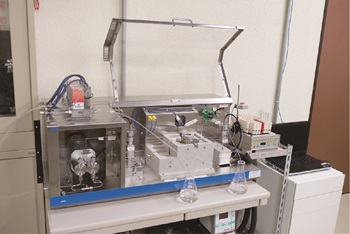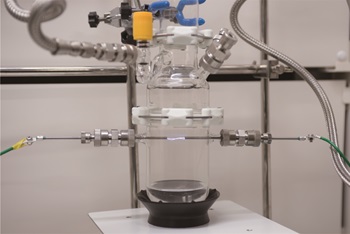Goals
1) Reductive environment
1-1) Ammonia: Haber-Bosch reaction in low-temp. condition w/ cement catalyst
1-2) Amino acids and nucleobases: Miller-Urey experiments w/ minerals and light
2) Oxidative environment
2-1) Ribose: Formose reaction w/ borate
2-2) Acetate: CO2 → Methanethiol → Acetate
3) Phosphates: Phosphate mineral reaction with H2O
4) Proto-metabolic roles played by minerals and light:
* AFM/STM/TDS/NSOM measurements of Organics-Surface-Light interactions
Challenging goals
5) Abiotic synthesis of ATP (adenosine triphosphate)
* Reactions driven jointly by the influence of minerals and light
6) Oligonucleotides and oligopeptides
* Nucleotides and amino acids oligomerized on mineral surface with light
7) Computer simulation for exploring potential pathways
* Development of computational algorithms and models
Provided with up-to-date knowledge of plausible conditions on the early Earth, we focus on a question: How could the geological environments supply simpler inorganic and organic compounds, leading to the building blocks of life? We try to reproduce continuous chemical evolution in a consistent set of environmental conditions, where minerals may be of particular importance in catalyzing various reactions. We have designed an integrated experimental system to realize multistep chemical evolution, starting from the simple chemicals and minerals available on the early Earth.
 |
 |
| Flow-type hydrothermal reactor | Miller-Urey discharge experiment |
